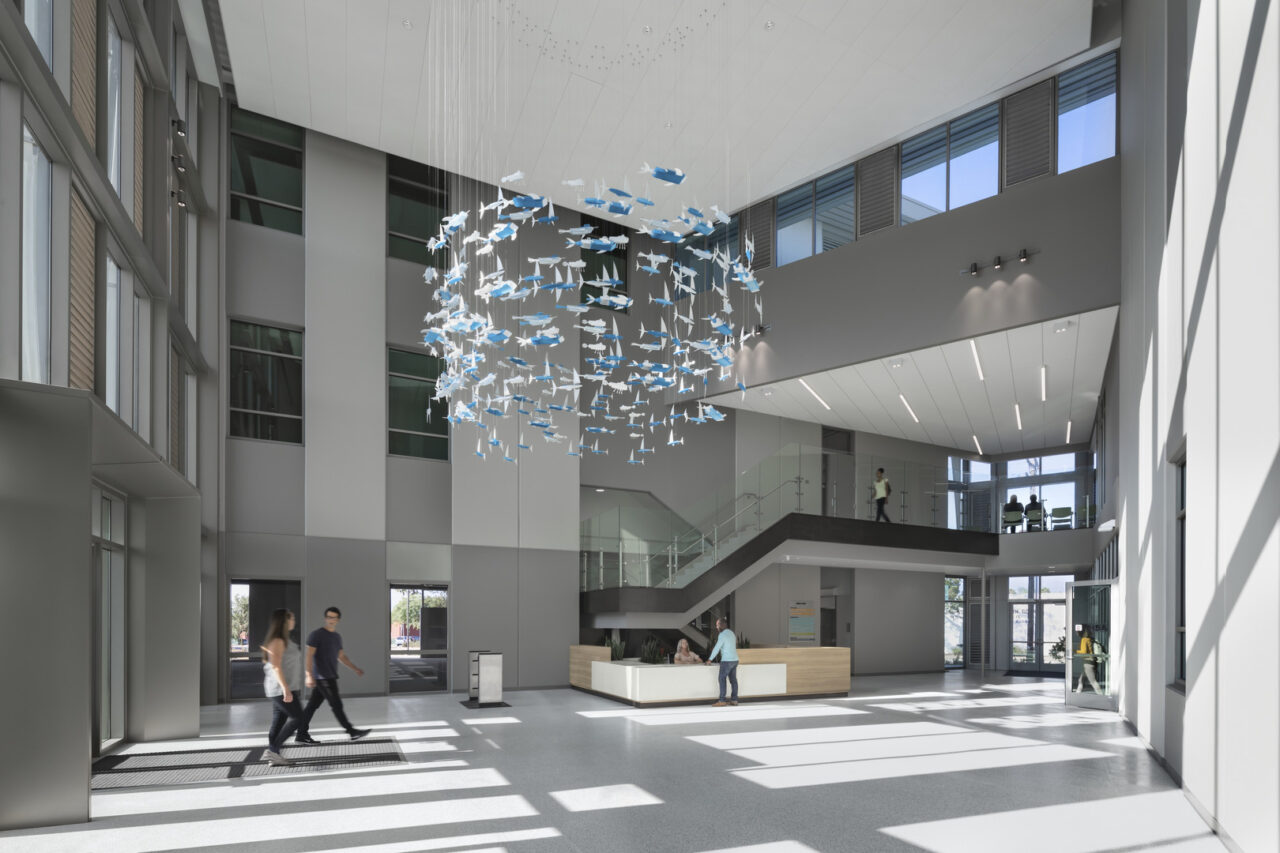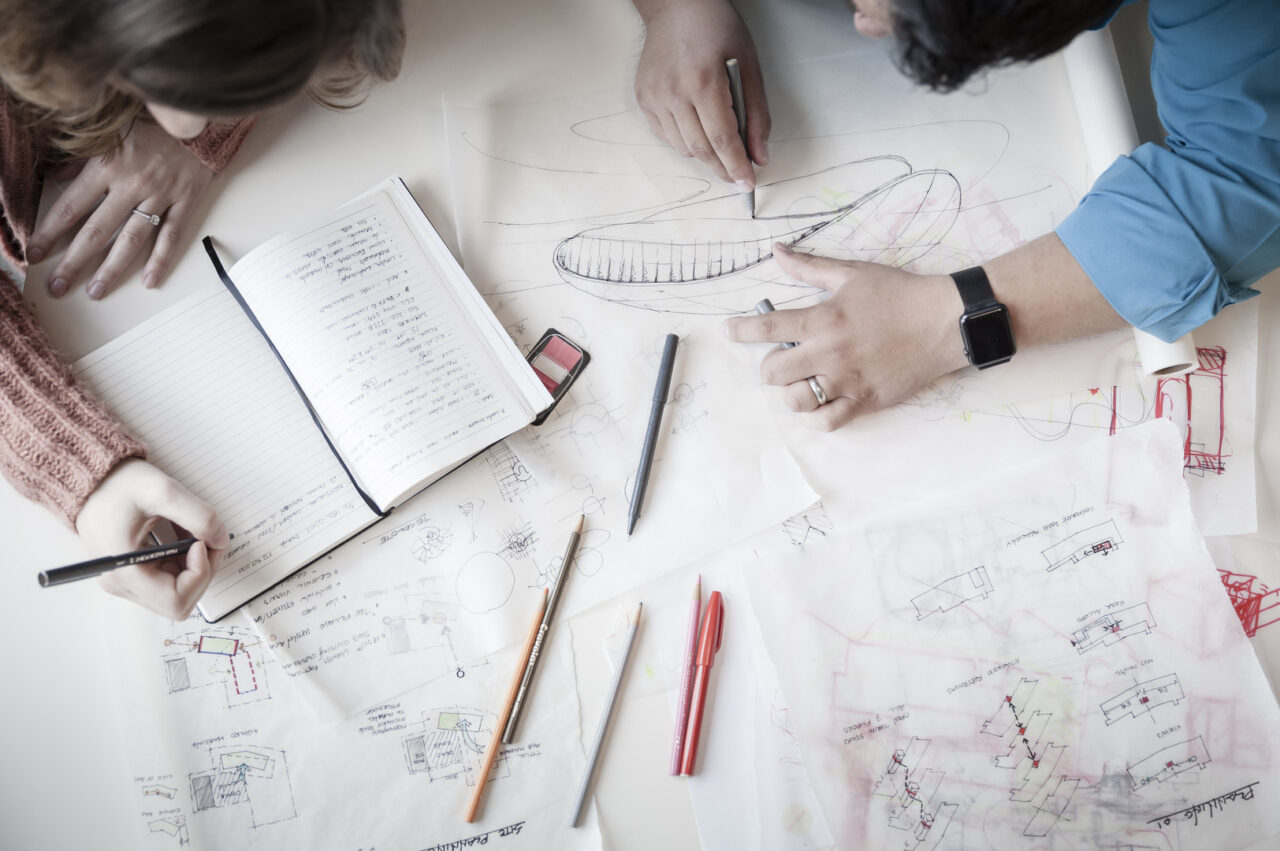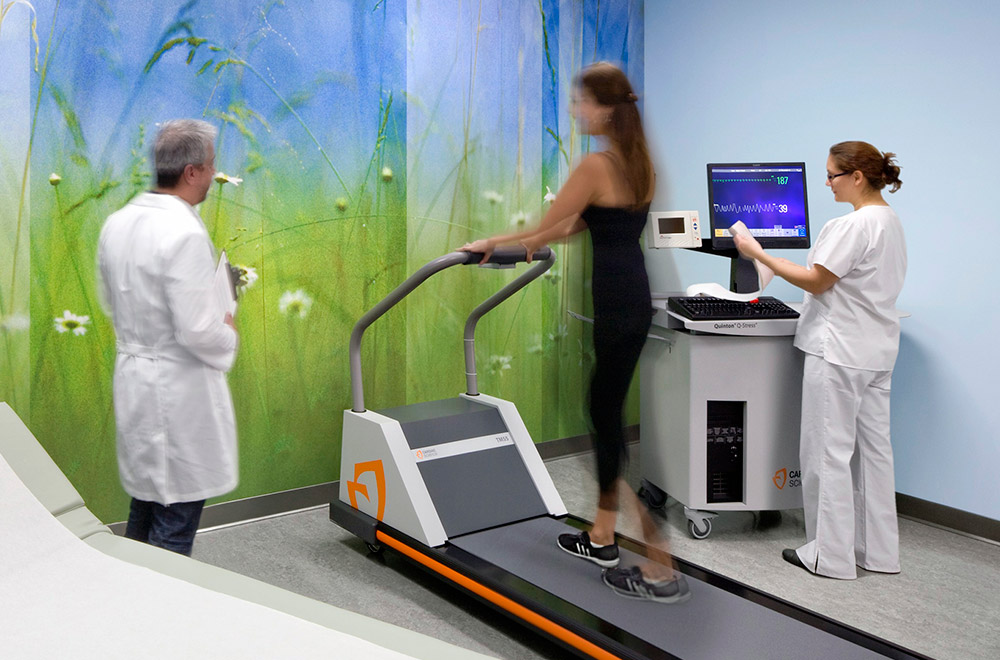Welcome to Five in Focus, HMC Architects’ blog series spotlighting the trends, ideas, and innovations shaping the future of architecture and design. Each edition features insights from our leaders as they share what inspires them and how it informs their work.
Daniel Perschbacher recently stepped into his new role as healthcare practice leader at HMC, bringing with him a fresh perspective on the future of healthcare design. The West Coast’s healthcare landscape is rapidly evolving—shaped by an aging population, advances in technology, and a growing emphasis on patient-centered care. To meet these challenges, medicine is becoming more specialized, and Daniel is thinking deeply about how architects can better support healthcare at the specialty level. Here are five areas he is focused on as he takes on this new leadership role:
1. Pediatrics: Designing for Healing and Joy
Children aren’t just small adults. Their healthcare spaces need to feel safe and welcoming for both them and their families. I’ve seen how access to natural light and nature views can significantly reduce stress and pain in pediatric patients. Calming colors, playful artwork, and sensory-friendly features—like adjustable lighting and noise reduction—make a real difference. I also believe in flexible layouts that adapt to different ages and needs, creating spaces that foster both healing and joy.

2. Cancer Care: Supporting Patients Through Complexity
Cancer treatment is physically and emotionally draining, and I believe the architecture of a cancer center plays a vital role in creating a healing environment. Designing for personalized medicine means building in flexibility for therapies and integrating technology for real-time data monitoring and virtual consultations. At the same time, we can’t lose sight of patient comfort during long treatments. Thoughtfully designed environments—with access to restorative views, calming surroundings, and supportive gathering areas—can help ease stress and uplift patients during their care journey. The challenge—and opportunity—is to design spaces that balance technological innovation with human compassion.
3. Behavioral Health: Making Care Accessible
The behavioral health crisis, intensified by the pandemic, requires us to think differently. Traditional construction is costly, and too often that limits access to essential care. I believe we need to bring behavioral health into the community—embedding counselors in schools, expanding community centers with outpatient programs, deploying mobile crisis units, and even weaving wellness into the workplace. By shifting away from episodic models of care and reducing stigma, architecture can play a pivotal role in making mental health support more accessible and preventative.

4. Academic Medicine: Investing in Innovation
Academic medical centers are vital to our healthcare ecosystem, but they face significant funding challenges. I’ve seen firsthand how state-of-the-art facilities can attract top talent, secure research grants, and inspire the next generation of medical professionals. The additional program and technology required of leading-edge academic medical centers may be more costly, but they’re critical investments. Now more than ever, I believe academic institutions must deliver beautiful and innovative solutions cost-effectively to sustain their essential role in advancing medicine.
5. Integrated Design and Construction: Building Smarter Together
Rising costs and increasing specialization demand a new way of working. I’m a strong advocate for integrated delivery—bringing builders and specialists into the design process early to improve quality, speed, and value. But integration isn’t just a method; it’s a culture. It requires collaboration, trust, and a willingness to rethink the “jack of all trades” mindset. At HMC, I’ve seen how leveraging the expertise of builders from the start can transform projects. When done right, integrated design and construction lead to smarter, more resilient outcomes.

Closing Reflection
As I step into this new role, my vision is clear: healthcare design must be specialized, adaptable, and deeply human. At HMC, we are committed to Design for Good—creating environments that not only meet today’s medical challenges but also anticipate the needs of tomorrow.

